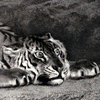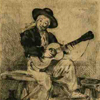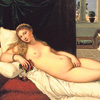Manet’s Absinthe Drinker, as mentioned before, was rejected by the Salon of 1859 because of Manet’s choice to so frankly depict a modern type. In defense of his painting he said, “I have made a Parisian type, studied in Paris, while putting into its execution the technical naïveté that I recognized in Velázquez’s painting. No one understands. Perhaps they will understand better if I make a Spanish type” (Fried 1996, 36). Only a few years later, Manet would go on to create paintings such as Mademoiselle V. in the Costume of an Espada [hyperlink to Deja Londono’s essay] (1862) (Figure 4), and other scenes that depict French people dressed in the clothes of Spanish people. These paintings, created after the time of the Absinthe Drinker, although often identified as Manet’s more Spanish paintings, are much less true to the essential “Spanishness” of Velázquez, even though they still use the 17th-century master as influence. The Mademoiselle V. painting was made in his studio as he studied the costumed figure, as the title suggests. Manet, although attempting to please his audience by depicting these “Spanish types,” is also mocking his audience because they are not truly Spanish. As mentioned earlier, Manet believed that figures in Spanish artwork had the power to command their audience. The Mademoiselle V. painting does not have the same ability to do this as Absinthe Drinker because the figure is not a real type; French people did not walk around dressed in stereotypically Spanish clothing. It is difficult for the viewer to engage with Mademoiselle V. because they are aware she is dressed as a Spanish type; her relationship with the viewer becomes one of merely watching, and imagining oneself in the position of Manet as the painter. Manet is still commenting on contemporary French society, not so much focusing on the modernization of Paris, but focusing on the banality of his society. He was secretly pleased with himself and his ability to still depict Parisian types but by disguising them in Spanish clothes; it acted as a loophole for him to still comment on contemporary life.
Manet’s later paintings may be “Spanish” in subject matter alone, but lose some of their realism due to their purely emulative characteristic. The Absinthe Drinker is clearly not representing a typical Spanish type; however, the character is so true to Velázquez that it makes it hard to deny the directly Spanish quality of the work.
Manet, by quoting the figures like the philosopher from Velázquez’s paintings, was inserting himself into the Realist tradition that Velázquez is identified with, and set himself up as one of the leaders of Modern painting. Manet, being a modern artist, living in one of the most industrialized cities of the time, developed a language of painting that moved away from the academic tradition. He painted what he saw, which in the case of the Absinthe Drinker, was a type in Paris that was becoming more common in urban life. This desire to connect to modern life and command power over his audience made his goal for creating art very much like Velázquez’s. Manet’s later work loses its validity; his goal at this time was to please the French audience and was not about conserving Velázquez’s Spanish identity. The Absinthe Drinker is one of the only paintings that really got to the core of Velázquez’s “Spanishness” and in a way, the Spanish reality of Velázquez’s work acted as the tool Manet needed to go against the academic tradition and establish himself within the modern world of painting.















